
Kruger's historical society of farmers, goldsmiths & traders

![]()
There is an ancient and sacred site on the Luvuvhu River in the northern reaches of the Kruger National Park that unlocks some of the fascinating history of southern Africa. The people of the walled kingdom of Thulamela first lived here about 400 years before Europeans first settled in South Africa. This was a sophisticated society of farmers, goldsmiths and traders who thrived by selling their manufactured jewellery and other goods to people from across the globe, using the river system to transport their goods to the east coast. I spent time at Thulamela with direct descendants of the Thulamela royal family as they paid their respects at the burial sites of a king and queen from way back when.
There are about 300 identified archaeological sites in Kruger National Park, ranging from early Stone and Iron Age settlements to more recent historical buildings. The 9-hectare Thulamela site is the largest and most dramatic of several ancient stone-walled sites in the area. This stone fortress was inhabited by an estimated 2,000 people from AD 1250 to AD 1700, rediscovered in 1983 by a park ranger and painstakingly restored in the 1990s. The stone walls have been beautifully reconstructed by masons who worked for 14 months and packed more than 2,000 tons of the original stones to rebuild the ancient circular kraals – without cement or mortar, just as they were several hundred years ago.
The meaning of the name Thulamela is not clear, with some sources suggesting it to mean ‘growing mound’, in reference to the tall anthills in the area and others suggesting “the place of giving birth” or alternatively ‘seed of stillness’.
The spectacular Thulumela walled kingdom is perched on a rocky hill overlooking the Luvuvhu River and shares its spectacular view with massive baobab trees, some dating back thousands of years – certainly far earlier than human settlement in the area. The kingdom was built by the Makahane subtribe – members of the Vhalembethu clan of the Karanga tribe (Shona ethnic group) from Zimbabwe. These are the forefathers of the Venda people.
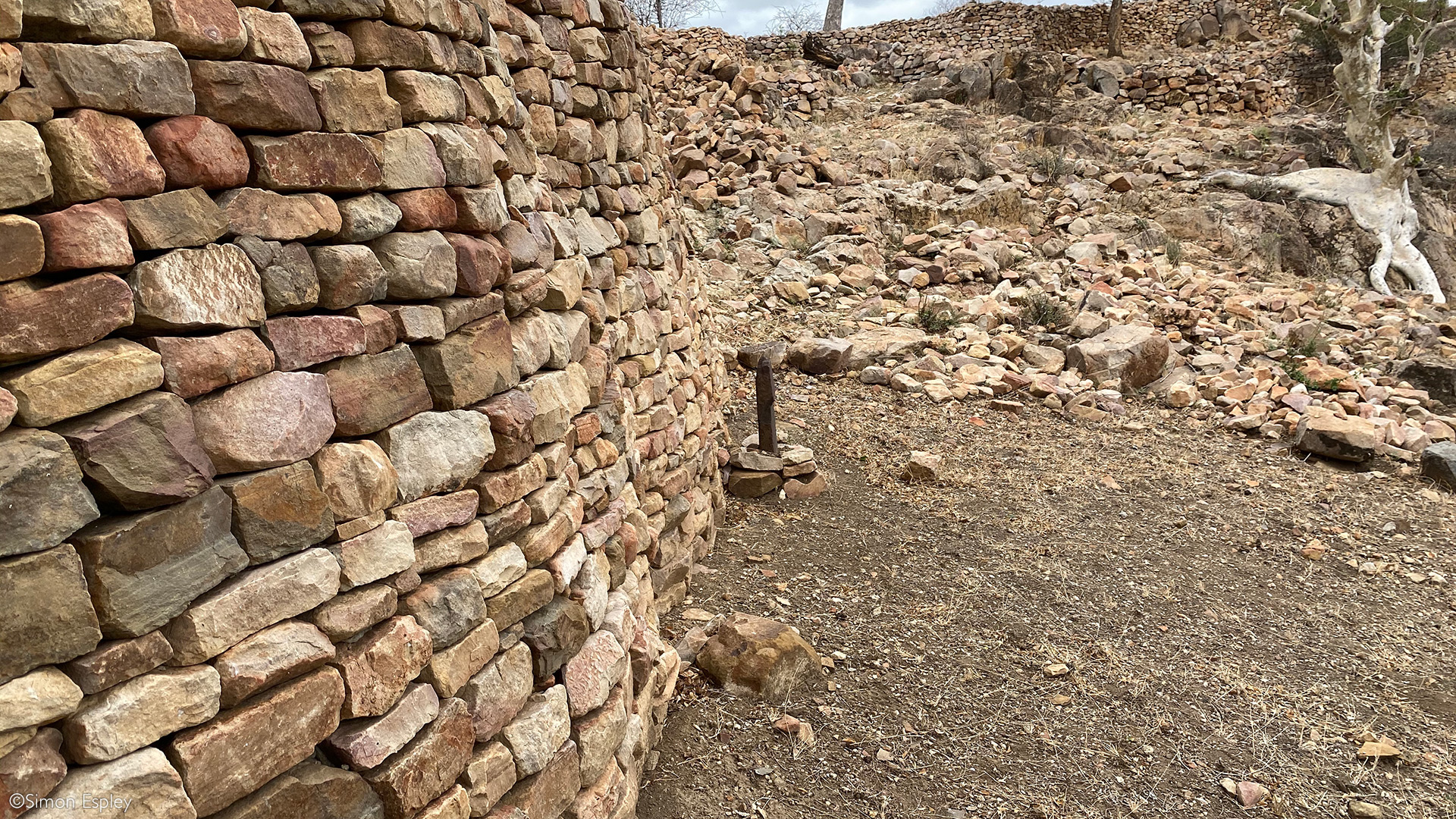
SACRED LEADERSHIP
This was a hierarchical society, and the royal family ruled from their stone-walled fortress on the hill, while the commoners lived below where they farmed and mined iron ore from about 200 sites. These civilisations were amongst the first in Africa to show the characteristics of sacred leadership and social classes.
According to oral histories, the people of Thulamela believed that there was a mystical relationship between their leader (the Khosi) and the land and that the ancestors of the Khosi would intercede on behalf of the nation. The Khosi was an elusive figure who lived a secluded life in a hilltop palace and could only be seen by specific individuals. If a commoner wished to meet the Khosi, he would go to a special chamber that was divided probably by a central wall separating the visitor from the Khosi. The concept of sacred leadership transcends that of today’s king and queen.

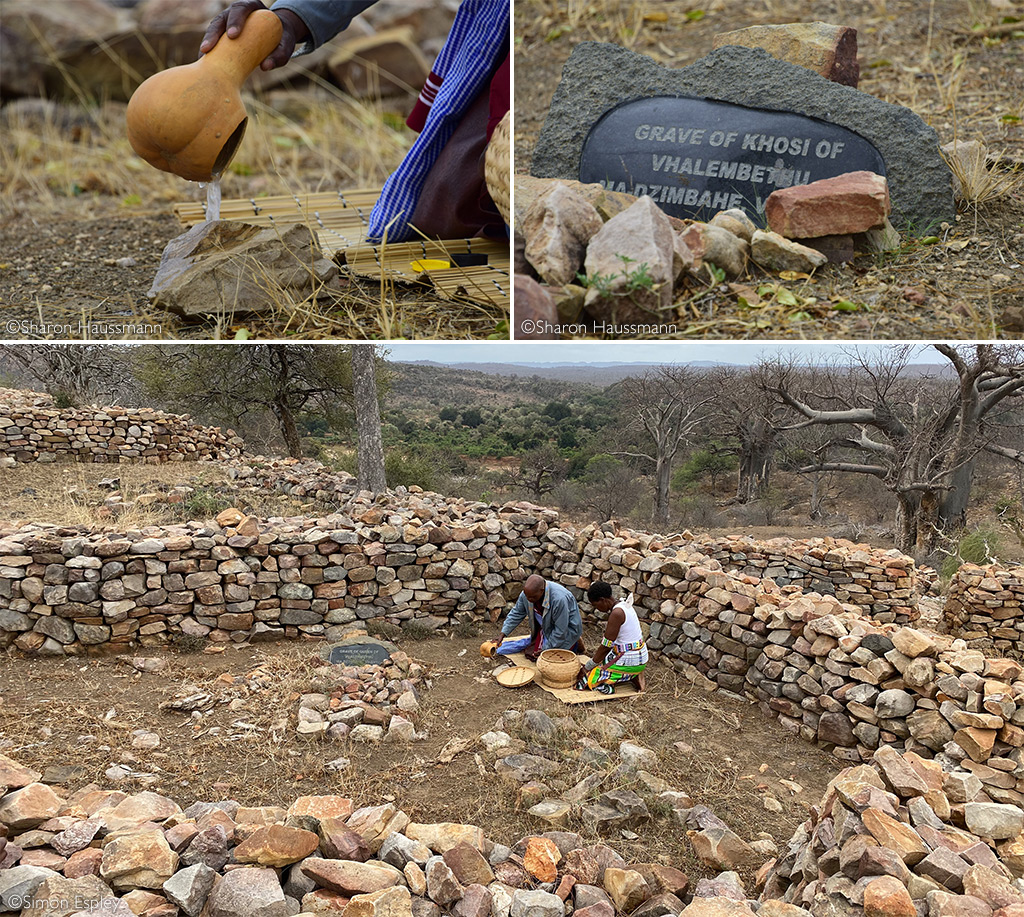
GRAVES
During the 1996 archaeological excavations, 2 graves were found beneath hut floors.
The first skeleton discovered was that of a female, dated to around AD 1600. Anatomists believe she was somewhere between 45 and 60 years old and measurements of her bones indicate that she was over 1.73m tall. Her body had been laid on its side with her hands folded under her cheeks – the losha position, indicating respect. As a result, archaeologists named her Queen Losha. She was buried along with 291 gold beads, a gold bracelet on her left arm and copper wire on her legs. Queen Losha was later reburied on the site, with 800 people attending the ceremony.
The second skeleton, a male, was dated to around AD 1450 and it is possible that he never lived at Thulamela. The skeleton was broken and packed in a square shape, implying that the person did not die on the site. He had injuries to the lumbar vertebrae consistent with a sharp object and was buried with 73 gold beads and 990 ostrich egg beads. The archaeologists named him King Ingwe (leopard) because, on the day that his grave was found, a leopard was waiting as the excavating team returned to their vehicle.

TRADE
As we strolled the ancient fortress, we were shown various artefacts and tiny remnants collected from the site that reflect the extensive trade links of these people. Glass beads, Chinese porcelain, imported textiles, ivory bracelets, gold, bronze, and other jewellery have all been found. Skilled artisans forged gold and iron which were traded as currency in exchange for ivory, glass beads and grain from merchants closer to the east coast. There were likely also trade links with West Africa. Goods were ferried along the Luvuvhu and Limpopo Rivers to Mozambique for onward distribution via Arab traders to markets in the Middle East, India, South East Asia, and China.
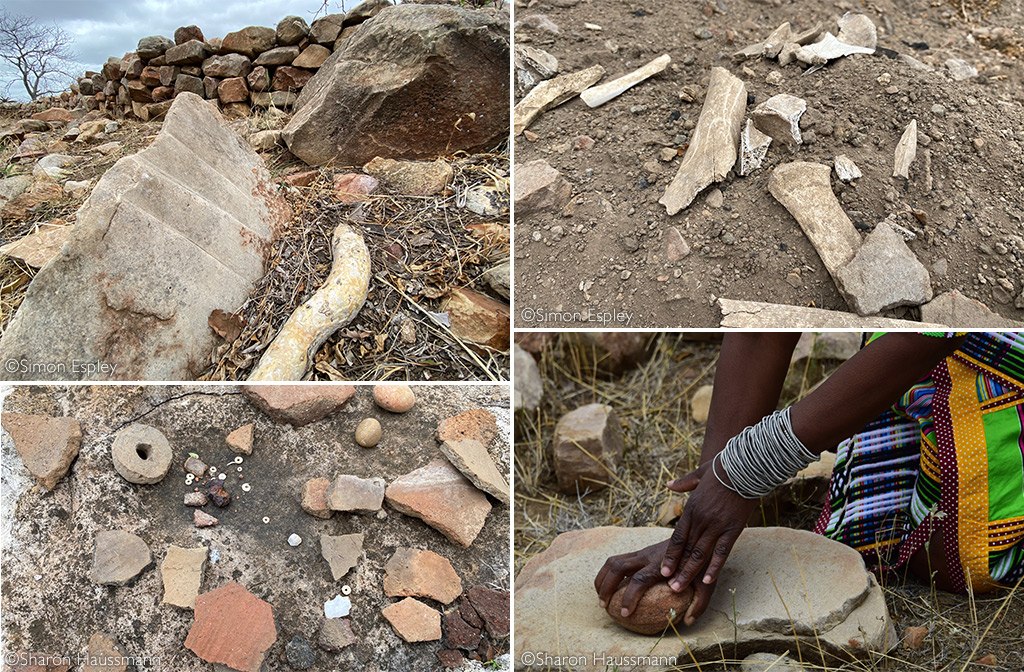
FARMING
The fertile Luvuvhu River flood plain was cultivated to yield sorghum and millet to make porridge and beer. Clay spindle wheels found in the area suggest that cotton was also cultivated for making cloth. Numerous potshards found on the site are the remains of discarded clay pots made by the women at Thulamela for cooking, eating, and drinking. The pots were of various shapes and sizes and often decorated.
WHY DID THEY LEAVE?
The Thulamela civilisation lasted about 450 years, and the area continued to be occupied for another 120 years – presumably by the same people. Subsequently, the Makuleke people moved into the area and assumed control (which has lasted till current times).
The reasons for the demise of the Thulamela kingdom are not known because there is no written history from the inhabitants of the kingdom, and oral history seems to have disappeared when the city was abandoned. Archaeologists and social anthropologists have presented many theories that range from traditions surrounding the death of a ruler, an environmental disaster or war over the control of land and resources. The influence of Portuguese colonialists in Mozambique and civil war in Zimbabwe have also been mooted as reasons.

THREE WALLED KINGDOMS
Many stone-walled sites around southern Africa reflect the presence and migration of these walled-kingdom-living people in southern Africa. The three best known, and the largest, are Mapungubwe, Great Zimbabwe and Thulamela. Another example is the Khami Ruins near Bulawayo – the second-largest stone ruin site in Zimbabwe.
It is believed that there was a migration of people between these three kingdoms, in that order – from Mapungubwe to Great Zimbabwe and finally to Thulamela. The exact dates of living and departing from each site are estimates, and there are overlapping periods when more than one location was inhabited.
During the Middle Iron Age – about AD 900 – Bantu people moved from the north into the Limpopo valley and initially established themselves at Mapungubwe (circa AD 1075-1220) where they built a walled kingdom. Before this, Bantu people were mostly nomadic in the region. From there they established Great Zimbabwe (circa AD 1200-1400) and then to Thulamela (circa AD 1250-1700).
Gold found at both Thulamela and Mapungubwe was found to have the same ‘chemical fingerprint’. “The conclusion could therefore be drawn that both the Mapungubwe and Thulamela gold artefacts originated from the same gold source,” wrote a team of researchers in a paper published in 1998 in the journal Gold Bulletin.
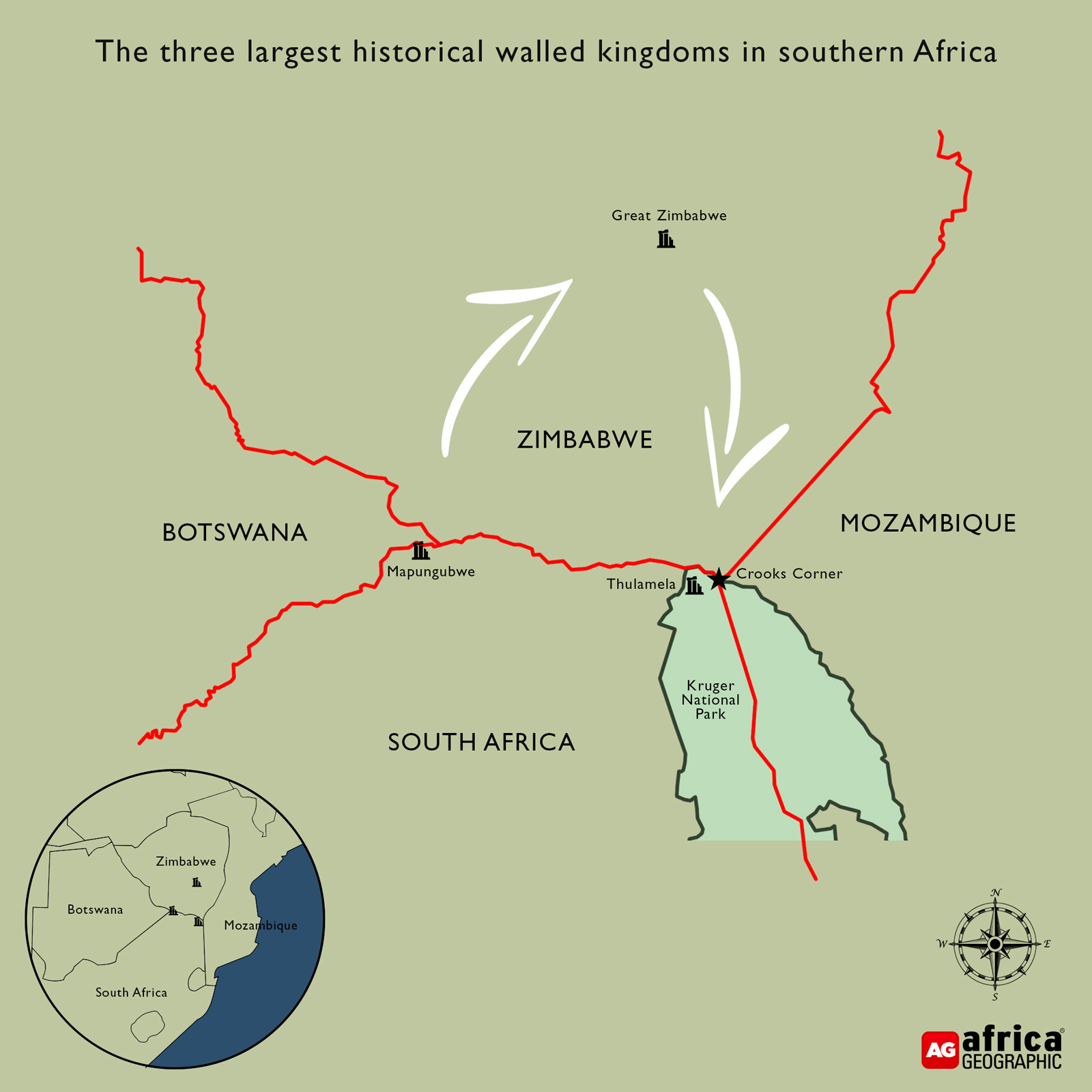
WHO CAME BEFORE?
Of course, the Mapungubwe/Great Zimbabwe/Thulamela era is but a snapshot in time. Before these civilisations, the area was inhabited as far back as 100,000 years ago by San people (‘Bushmen’), as evidenced by Middle and Late Stone Age artefacts such as stone tools and rock paintings. The San people disappeared during the Late Iron Age after the arrival of the Bantu-speaking people from further north in Africa who were looking for more grazing land for their cattle. Arab slave traders were raiding the area circa AD 800, using the ports in Mozambique to ferry slaves to destination markets.
YOUR VISIT TO THULAMELA
Thulamela is a site of immense cultural importance. Although the site is in the Kruger National Park, no visitors are permitted unaccompanied by a SANParks guide, and booking is essential.
To visit Thulamela with a SANParks guide, please contact SANParks via this informative website page. If you are staying at a nearby lodge, ask them beforehand if they can arrange a guided visit to the site.
We stayed at Pafuri Luxury Tented Camp during our time in northern Kruger, an excellent base from which to explore the Makuleke Contractual Park and to visit Thulamela. For more about this camp and about the other RETURNAfrica camps, also read more about the Makuleke Contractual Park in the northern reaches of the Kruger National Park.
Want to go on a safari to Thulamela? To find lodges, search for our ready-made packages or get in touch with our travel team to arrange your safari, scroll down to after this story.
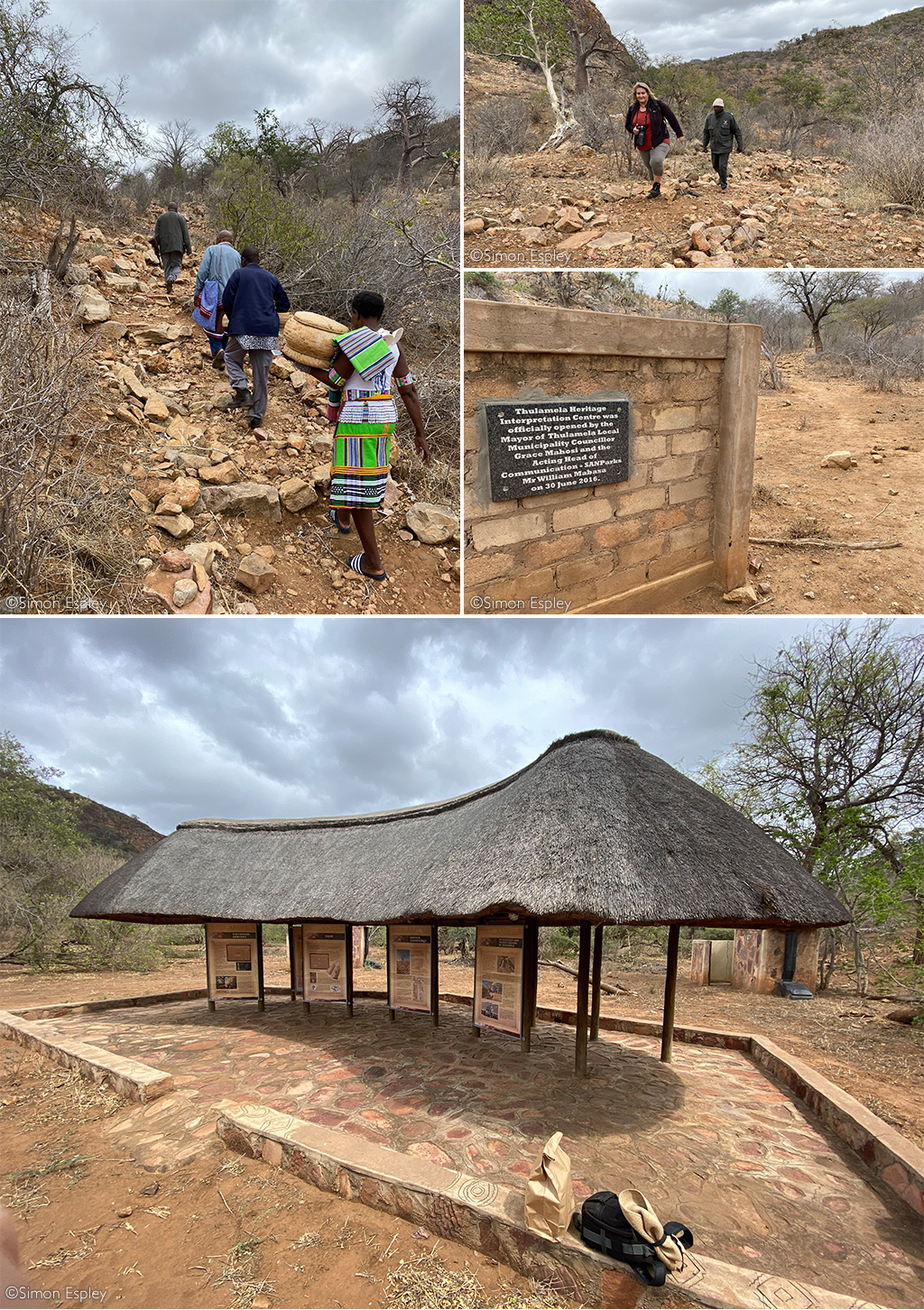
FINAL WORD
The experience at Thulamela deeply moved me and my long-time friend and occasional travel companion, Sharon Haussmann. There is no question that this sacred site has a deep spiritual ambience – we both felt the presence of the ancestors who still preside over this wild part of the Kruger National Park from their hilltop fortress.
We had the immense privilege of attending a ceremony conducted by Khosi Wilson Matodzi Magulasavha Makahane and Makhadzi (aunt) Lucy Lufuno Makahane. Also in attendance were community member Gilbert Munyai and SANParks guides Carel Nkuna and Daniel Shibambu.
I would also like to thank Isaac Phaala of SANParks, and his colleagues, for making this immensely spiritual sojourn possible.![]()
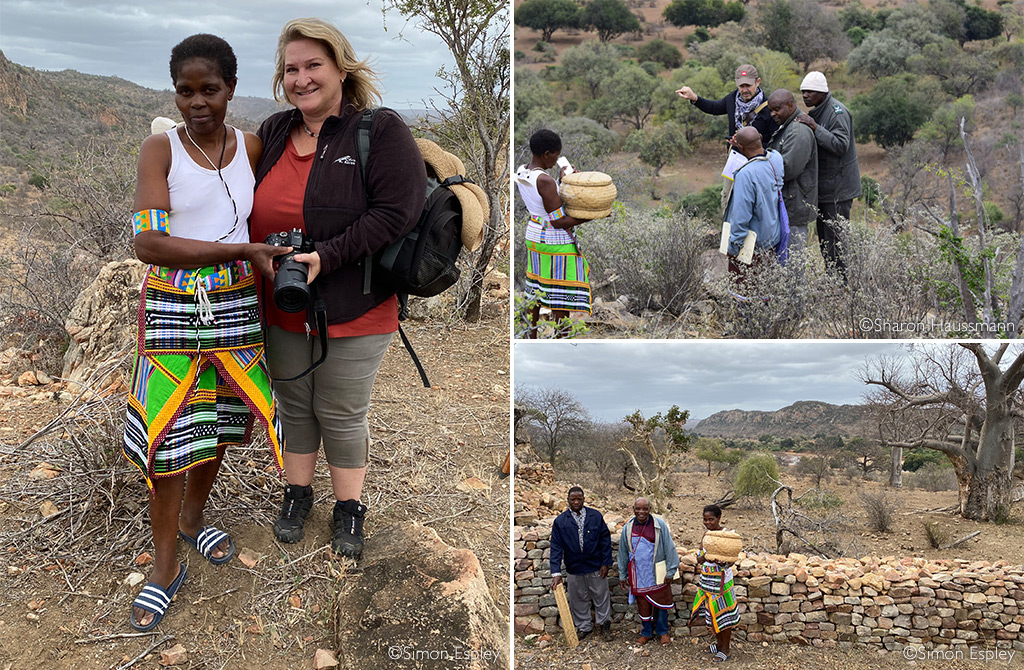

About the author
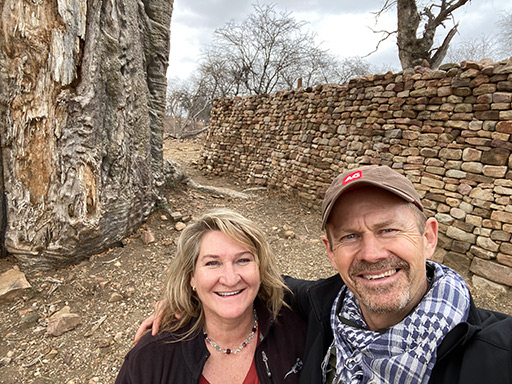 I am a proud African and honoured to be CEO of Africa Geographic. My travels in Africa are in search of wilderness, elusive birds and real people with interesting stories. I live in South Africa with my wife, Lizz, and 2 Jack Russells. When not travelling or working, I am usually on my mountain bike somewhere out there. I qualified as a chartered accountant, but found my calling sharing Africa’s incredibleness with you. My motto is “Live for now, have fun, be good, tread lightly and respect others. And embrace change”. Connect with me on LinkedIn. ”
I am a proud African and honoured to be CEO of Africa Geographic. My travels in Africa are in search of wilderness, elusive birds and real people with interesting stories. I live in South Africa with my wife, Lizz, and 2 Jack Russells. When not travelling or working, I am usually on my mountain bike somewhere out there. I qualified as a chartered accountant, but found my calling sharing Africa’s incredibleness with you. My motto is “Live for now, have fun, be good, tread lightly and respect others. And embrace change”. Connect with me on LinkedIn. ”
Picture: Simon Espley with long-time friend Sharon Haussmann on assignment at Thulamela
To comment on this story: Login (or sign up) to our app here - it's a troll-free safe place 🙂.![]()




